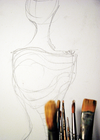New in Ardour 3
|
Instead of introducing spectacular leaps in version updates, the developers of the Ardour free digital audio workstation (DAW) have concentrated on providing many detailed enhancements in the past 12 months.
The third generation of Ardour introduces MIDI tracks and a still experimental video timeline with thumbnails. The project has meanwhile released five new versions and about a dozen bug-squashing updates among other things (see Figure 1).
Additionally, the functionality of the music production suite is easily enhanced with a variety of extensions (see the "Plugins" box).
[...]
Use Express-Checkout link below to read the full article (PDF).
Buy this article as PDF
Express-Checkout as PDF
Pages: 5
Price $0.99
(incl. VAT)
(incl. VAT)




